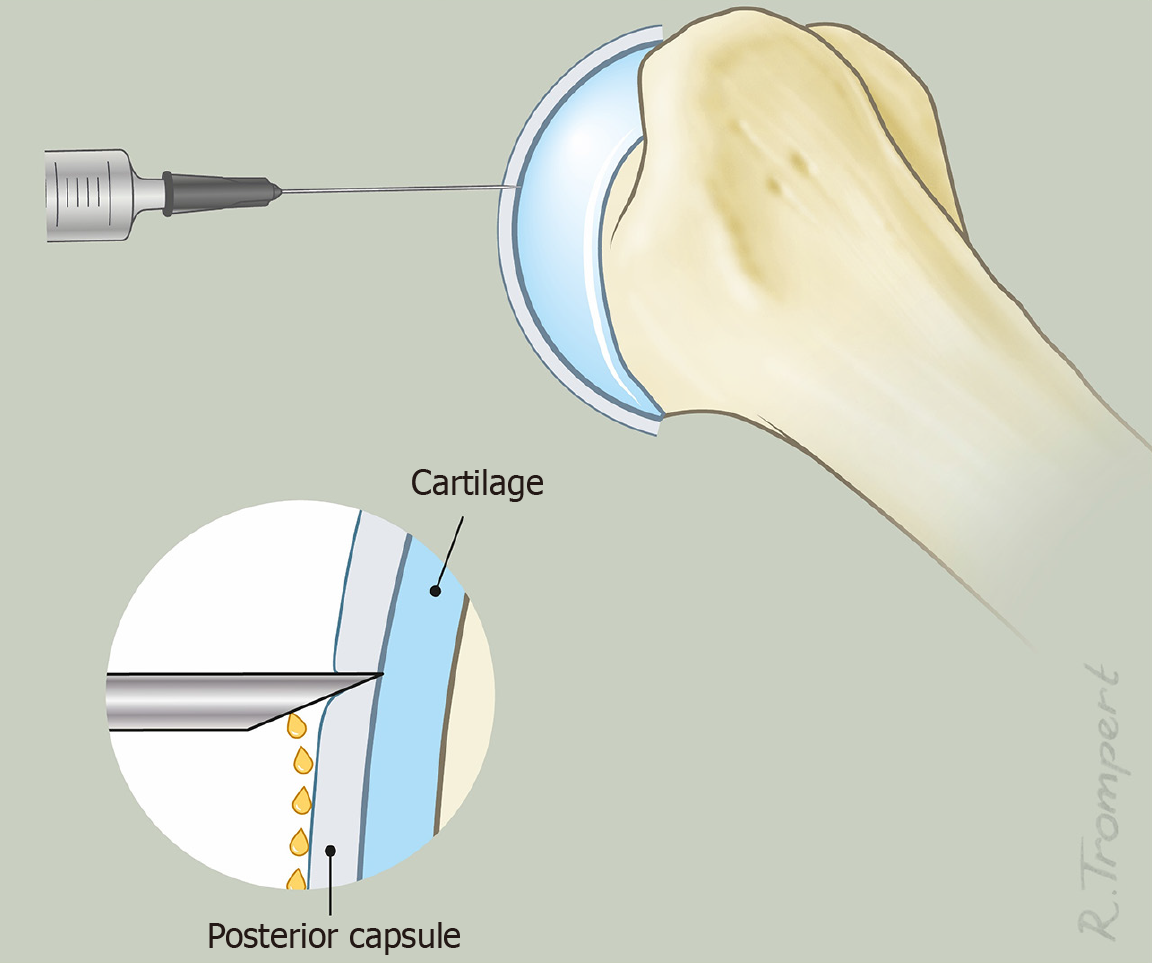Copyright
©The Author(s) 2025.
World J Orthop. Nov 18, 2025; 16(11): 111903
Published online Nov 18, 2025. doi: 10.5312/wjo.v16.i11.111903
Published online Nov 18, 2025. doi: 10.5312/wjo.v16.i11.111903
Figure 1 Possible mechanism of leakage of the injection fluid even when the tip of the needle has penetrated the joint capsule.
If a needle with a large bevel passes perpendicularly through a relatively thin capsule a large part of the bevel is still outside the joint.
Figure 2 Position.
A: Position of the needle with the arm in maximal medial rotation. The needle has passed the capsule perpendicularly. Notice that a part of the opening of the needle is still outside the capsule; B: After a small lateral rotation, the bevel of the needle has been pulled under the capsule into the joint. Notice that the tip of the needle is in contact with the cartilage, but does not change its position with respect to the cartilage during the rotation.
Figure 3 Position of needle.
A: The patient sits with the arm in medial rotation by placing the lower arm on the trunk. The surgeon's index finger is placed on the coracoid process. The skin was punctured two cm below the point where the acromion and the spine of the scapula meet in the direction of the coracoid process; B: The position of the forearm after 25-35 degrees lateral rotation. Notice that the needle has moved slightly deeper into the body than in the starting position in Figure 3A.
- Citation: Mens JMA, Van Kalmthout RTM. Improving accuracy for intra-articular injections for capsulitis of the shoulder by changing the injection technique. World J Orthop 2025; 16(11): 111903
- URL: https://www.wjgnet.com/2218-5836/full/v16/i11/111903.htm
- DOI: https://dx.doi.org/10.5312/wjo.v16.i11.111903















